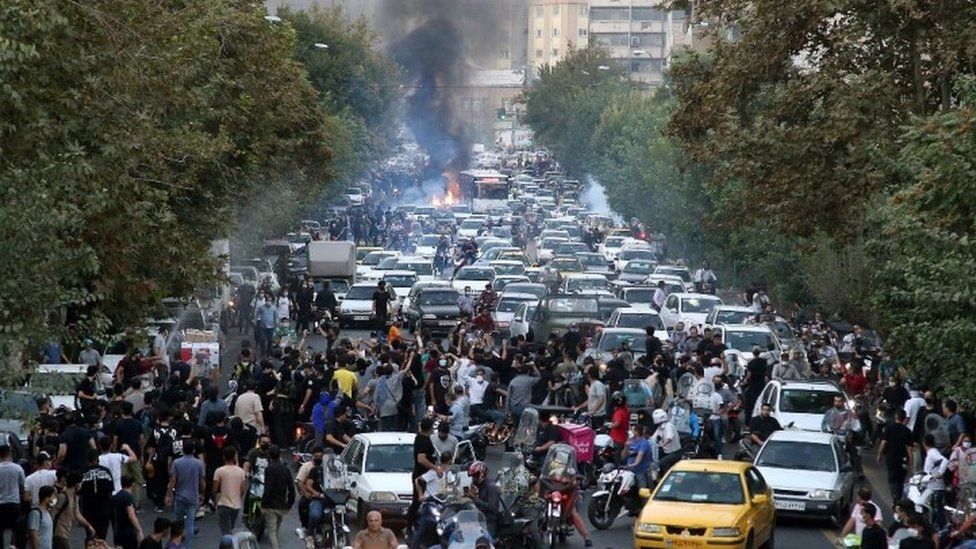The Iranian people’s protests have gained pace in more cities and towns across the country. There seems to be an evolution in the people’s movement, both in the slogans chanted in the daily demonstrations and the actions, such as targeting the regime’s sites with Molotov cocktails.
The natural trend in any protest includes more meaningful measures by protesters on the ground that go above and beyond the scope of various analysts and talking points spewed by “activists” and “experts” in the West. This evolution also defuses the ruling regime’s countermeasures against the protesters’ growing national movement.
In the first days of Iran’s current protests the ruling regime was going the distance in tagging the protesters as those favoring “unbridled liberalism”. Some voices inside the regime accused the protesters of being directly associated to foreign governments. Through various incidents, such as burning the Quran and pulling chadors off of women by its own elements disguised as protesters,there are attempts to demonize the protesting public as “rioters”, “anti-Iran elements” and “against Islam”. The protesters were described as “separationists” and downgraded to mustering only 100,000 people across all of Iran. In a speech on October 29, Hossein Salami, head of the regime’s Islamic Revolutionary Guards Corps (IRGC), went as far as claiming the protests will end on the same day. Protesters took to the streets that very day, both in large numbers and by throwing Molotov cocktails at the regime’s symbols. People in the cities of Tehran, Mashhad, Karaj, Kermanshah, Arak, Ahvaz, Piranshahr, Astara, Lasht-e Nesha near Rasht, were protesting and chanting anti-regime slogans. That day Iran witnessed some of the most intense protests by the country’s college students.
These measures, however, have failed to contain Iran’s protesting population and more analysts are describing this restive nation as a “powder keg” on the brink of exploding. An analyst expressed concerns signaling the regime’s dire concerns in a November 5 interview with the state-run Mostaghel daily.
“We have reached a point that one can no longer contain the status quo through the use of force and punishments… With each passing day the protesters are becoming more angry, braver, and fearless like never before… The security forces are facing serious challenges from their families that are taking the protesters’ side… If there are people who have remained silent and are merely witnessing the current circumstances, they’re actually part of the society’s gray layer. This actually escalates the threats a hundred times over. Enough with the baseless optimism. As long as we cannot hear the voice of the people, especially the younger generation, we will be shooting ourselves in the foot… The political power of a state relies on its national legitimacy and popular support. When a political establishment is challenged by the very society that it rules over, its legitimacy has been questioned and it will no longer enjoy any meaningful place among other governments.”
This piece appears to be an alarm for the regime as it calls for hearing the voice of the Iranian people’s protests. There is a growing list of such warnings and calls for dialogue in Iran’s state media while the regime’s forces are cracking down on the protesters in the streets. What regime officials, and many in the West need to understand, is that the Iranian society appears to have greater determination this time. As protesters said in Tabriz on November 9: “With or without the hijab, we’re heading for a revolution!”

